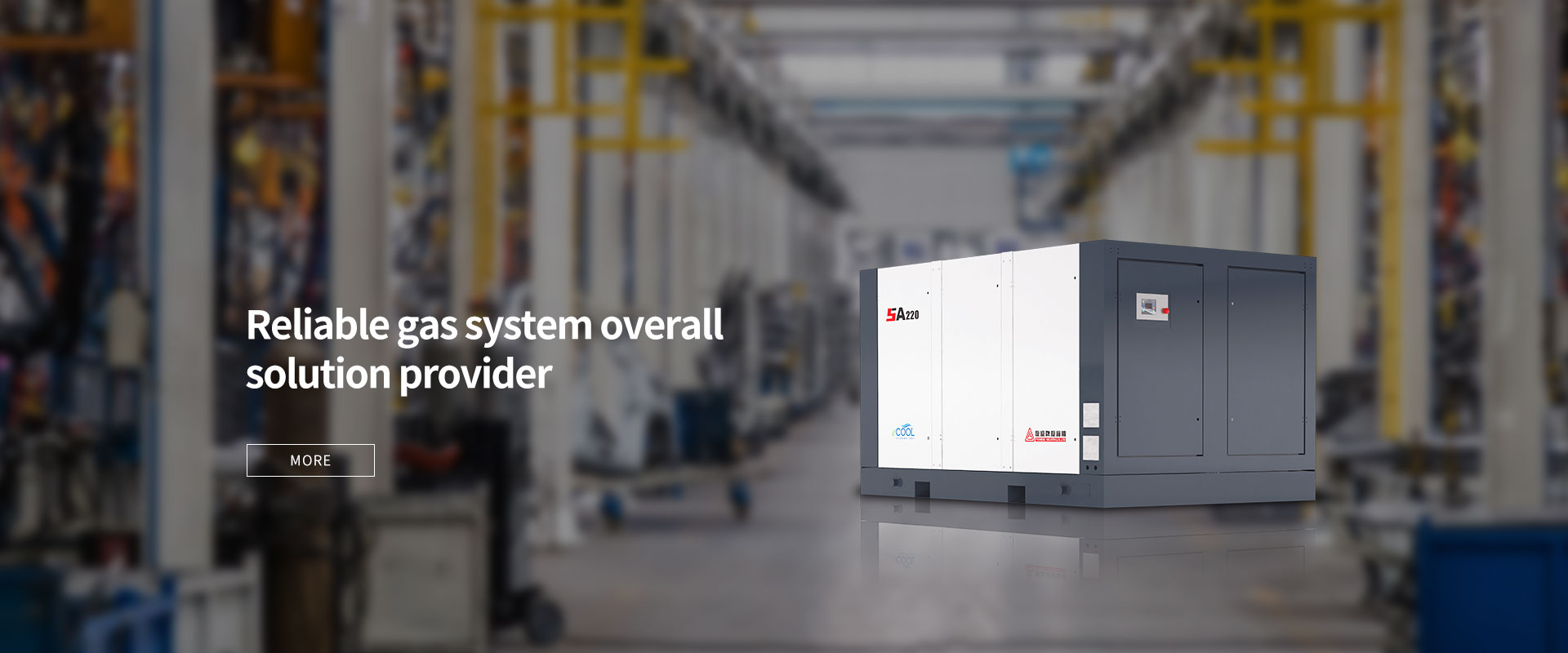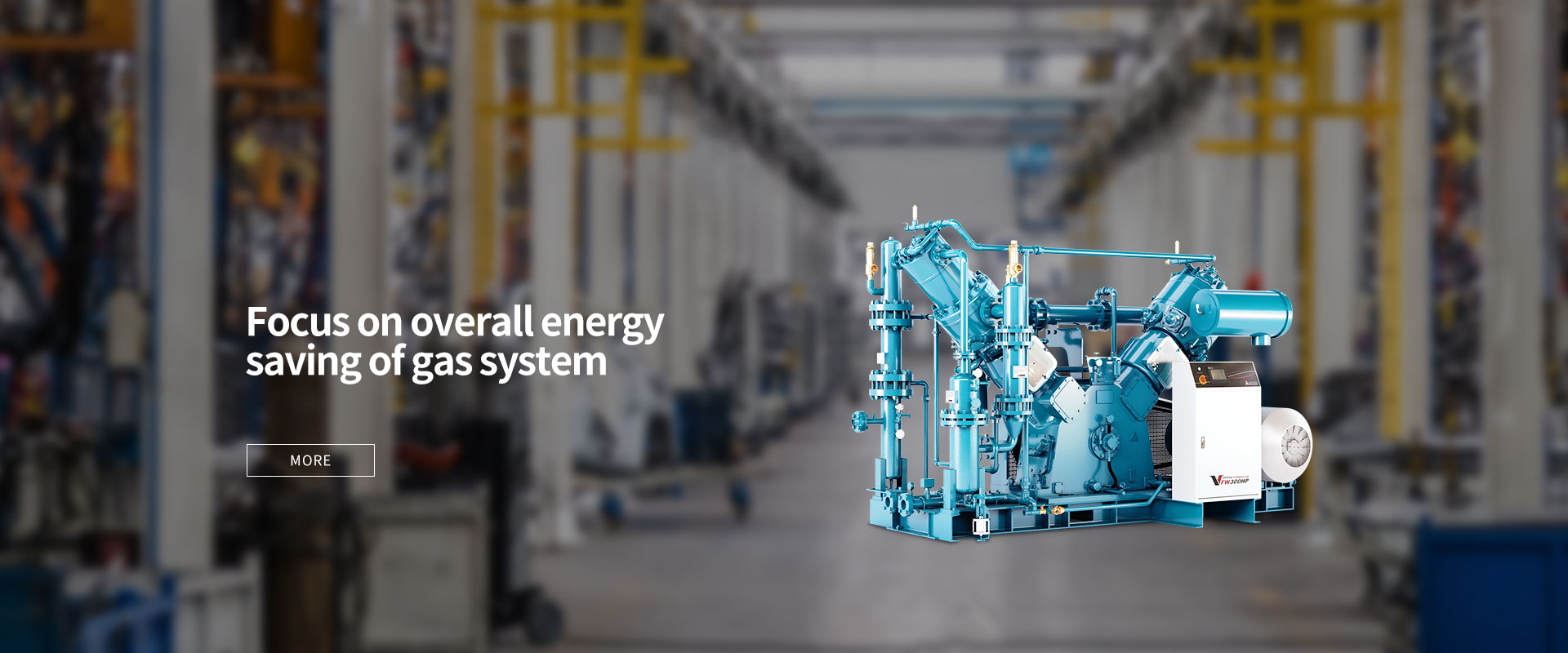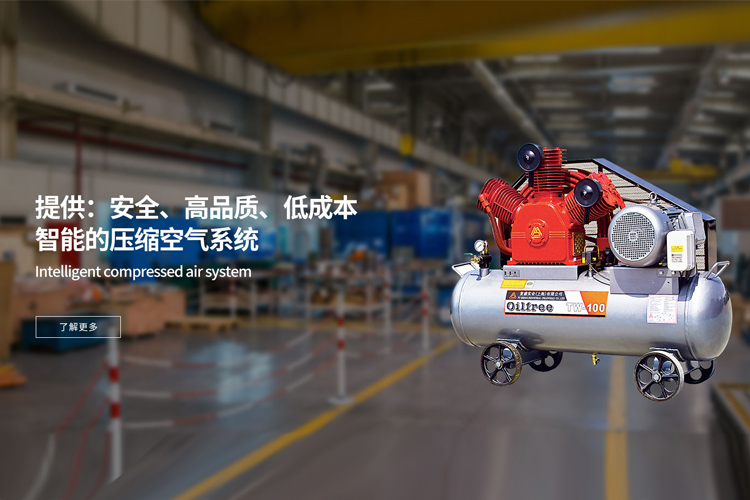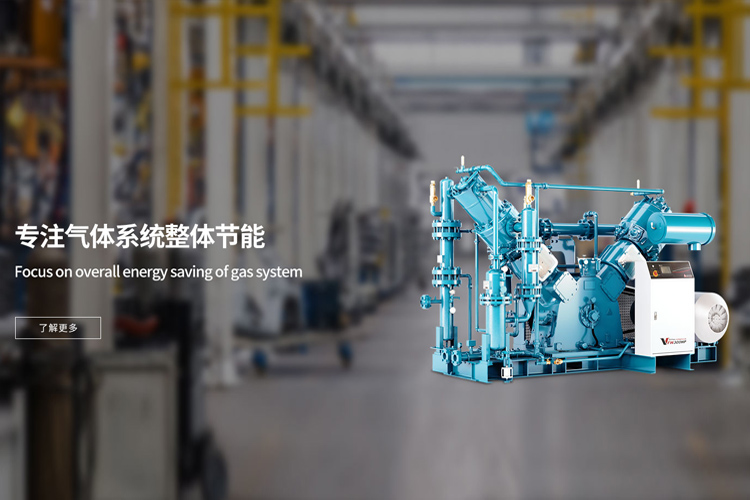Several reasons for the large consumption of lubricating oil in screw air compressors
2022-06-28
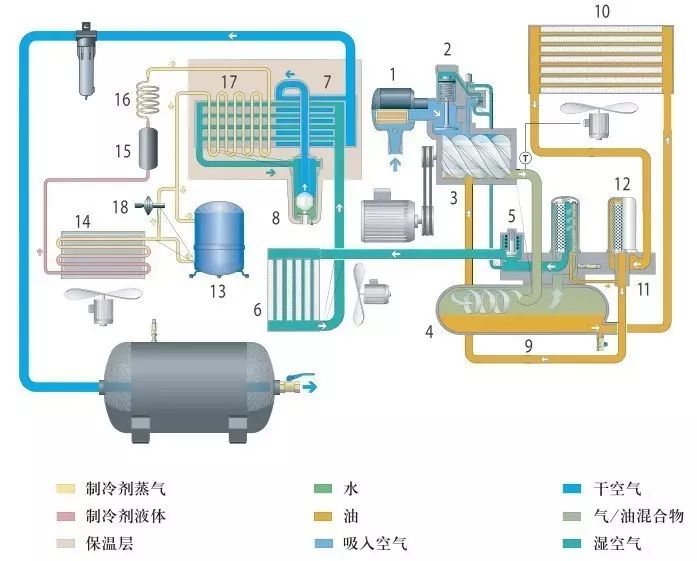
Reasons for high fuel consumption and oil failure
In an oil-injected screw air compressor, a large amount of oil is injected into the inter-tooth volume of the compressor while compressing the gas. The oil and gas mixture formed by the oil and the compressed gas is discharged into the oil and gas separator of the unit after undergoing the same compression process. The oil-air separator is one of the main equipments in the oil-injected screw compressor unit system. In order to reduce the oil content in the exhaust of the unit and recycle the lubricating oil in the unit, the oil and gas separator must be used to effectively separate the lubricating oil from the gas. If the oil separator fails, the lubricating oil cannot be separated well, and the lubricating oil will be discharged along with the compressed air. Therefore, the failure of oil separation and its oil separation core is the main factor for the large oil consumption failure of the oil-injected screw compressor.
Generally speaking, the oil content requirement for oil-injected screw compressors is that the residual oil content of the outlet compressed air after oil treatment is not more than 3ppm. Excessive oil content in the compressor outlet air is usually referred to as high oil consumption, also known as running oil, which has been a headache for manufacturers, sellers and users for a long time.
The main causes and hazards of compressor oil failure are as follows:
1. Oil separator is blocked
When the oil separator is blocked, the motor current of the air compressor will be too large. It is also possible that the oil separation core will be deformed due to excessive pressure, and the main engine will lock when the motor is overloaded seriously. In addition, the excessive current will shorten the life of the contactor or cause the contact to burn and cause a major accident. Generally, the screw air compressor will have a pressure gauge in front of the filter element. When the pressure difference between the pressure gauge in front of the filter element and the air supply pressure gauge reaches 0.08MPa, the oil separation core needs to be replaced.
2. Damaged oil separator
When the oil separator core is damaged, the oil consumption of the air compressor will be very serious, and there will be a lot of oil in the air storage tank and pipeline. In severe cases, the air compressor oil will be directly discharged when the drain valve of the air storage tank is discharged.
The main reasons for this failure are:
(1) The oil separator was not replaced on time;
(2) Oil separators with poor quality are selected;
(3) During the installation process, the operation was not carried out according to the regulations, such as inserting and breaking the oil separator when installing the oil return pipe.
3. Oil separator burnt
The burning of the oil separator is not common but occasionally occurs during the operation of the air compressor. The main performance is that the filter screen of the oil separation core is partially or completely carbonized, and even the metal shell of the oil separation core is burned.
Such failures occur mainly because:
(1) The quality of air compressor oil is poor;
(2) The quality of the oil separator itself is too poor;
(3) When installing the oil separator, there is no reliable connection between the oil separator shell and the oil separator barrel and cannot be grounded. When there is static electricity, the oil mist will be ignited and the oil separator will be burned.
4. Poor separation of oil cores
The main manifestation is that the compressed air contains too much oil, causing damage to the post-processing equipment and user equipment.
The reason for this failure is mainly because:
(1) The quality of the oil separator is too poor;
(2) The installation did not follow the procedures.
Other reasons
In the actual processing process, we found that there are still a large part of fault complaints not caused by the quality of the oil. So, in addition to the oil quality problem, what other reasons can cause the oil to run out of oil? In fact, these situations will also lead to oil running:
1. Pressure valve failure
The pressure valve is a component that maintains the pressure of the screw compressor system. If there is a leak point at the seal of the pressure valve or the pressure valve is opened in advance (due to the different manufacturers' designed opening pressure, the usual range is between 3.5 ~ 5.5kg/cm2) , then the time for the machine to establish the pressure of the oil and gas tank in the early stage of operation will increase. At this time, the gas oil mist concentration in the low pressure state is high, the flow rate is fast when passing through the oil component, the oil component load is increased, and the separation effect is reduced, resulting in large fuel consumption.
Solution: Overhaul the pressure valve and replace it if necessary.
2. Unqualified compressor lubricating oil is used
At present, the general screw compressors have high temperature protection, and their general tripping temperature is about 110-120 ℃, and some compressors use unqualified lubricating oil, which will cause different degrees of oil consumption when the exhaust temperature is high. (Based on this, the higher the temperature, the higher the fuel consumption). The reason is that after primary separation of oil and gas barrels at high temperature, some oil droplets can have the same order of magnitude as gas phase molecules, and the molecular diameter is ≤ 0.01 μm, which is difficult to capture and separate by oil, resulting in high oil consumption.
Solution: Find the cause of the high temperature, solve the problem and reduce the temperature, and use the best quality screw compressor lubricating oil as much as possible.
3. The design of the oil and gas separation tank is not standardized
Some compressor manufacturers have unreasonable design of the primary separation system when designing the oil and gas separation tank, and the primary separation effect is not ideal, resulting in a high concentration of oil mist before the oil intake, excessive oil load, and insufficient processing capacity, resulting in excessive oil consumption. high.
Solution: The manufacturer improves the design to improve the effect of primary separation.
4. Too much fuel
When the amount of refueling exceeds the normal oil level, part of the oil is taken away with the airflow, resulting in excessive fuel consumption.
Solution: After shutdown, after the air pressure in the oil and gas tank is released to zero, open the oil drain valve and discharge the oil to the normal oil level.
5. The oil return check valve is damaged
If the oil return check valve is damaged (from one-way to two-way), after the shutdown, the internal pressure of the oil tank will pour a large amount of oil back into the oil through the oil return pipe. When the machine runs next time, the oil in the oil will not be able to It is sucked back to the machine head in time, causing part of the oil to run out of the compressor with the separated air (this situation is common in machines without oil circuit stop valve and machine head exhaust outlet check valve).
Solution: Check the one-way valve after removing it. If there is any debris stuck on it, just clean up the debris. If the one-way valve is damaged, replace it with a new one.
6. Improper installation of oil return pipe
When replacing, cleaning and repairing the compressor, the oil return pipe is not inserted into the bottom of the oil separator (for reference: 1-2mm from the arc center of the bottom of the oil separator is better), so the separated oil cannot return to the machine head in time, and the accumulated oil will follow Compressed air runs out together.
Solution: Stop the machine, and after the pressure is released to zero, adjust the oil return pipe to a reasonable height (the oil return pipe is 1~2mm away from the bottom of the oil section, and the inclined oil return pipe can be inserted into the bottom of the oil section).
7. Large gas consumption, overload and low pressure use (or the oil processing capacity selected before the machine leaves the factory and the exhaust volume of the machine are too tightly matched)
Load low-pressure use means that when the user uses the compressor, the exhaust pressure does not reach the rated working pressure of the compressor itself, but it can basically meet the gas consumption requirements of some enterprise users. For example: the enterprise user has increased the gas consumption equipment, and the gas consumption has increased, so that the compressor discharge volume and the user's gas consumption cannot be balanced. Suppose the rated discharge pressure of the compressor is 8kg/cm2, but the actual pressure is only 5kg/cm2. Even lower, in this way, the compressor is under load for a long time and cannot reach the rated pressure value of the machine, resulting in an increase in fuel consumption. The reason is that under the condition of constant displacement, the flow velocity of the oil-air mixture increases when passing through the oil, and the concentration of the oil mist is too high, which increases the load of the oil and eventually leads to a large fuel consumption.
Solution: It is recommended to contact the manufacturer to exchange an oil product that can match low-pressure use.
8. The oil return line is blocked
When the oil return line (including the one-way valve on the oil return line and the oil return filter) is blocked by foreign objects, the oil condensed at the bottom of the oil part after separation cannot return to the machine head, and the condensed oil droplets are blown up by the air flow again. It is carried along with the separated air. These foreign objects are usually caused by solid impurities dropped during installation.
Solution: Stop the machine, remove all the pipe fittings of the oil return pipe after the pressure of the oil drum is released to zero, and blow out the blocked foreign matter. When installing the built-in oil separator, pay attention to clean the oil and gas barrel cover, and pay attention to whether there are solid particles remaining at the bottom of the oil separator core.

Official account QR code
Disclaimer: Some materials come from the Internet, if there is any infringement, please inform us to delete!



